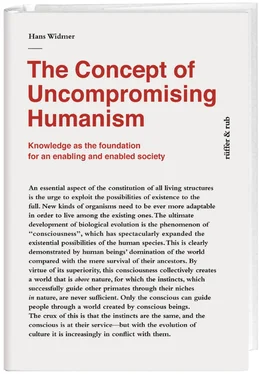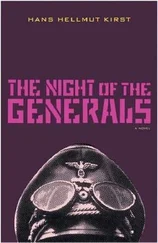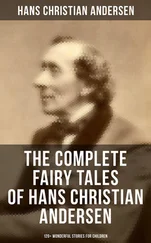Hyperstases
The proposed Concept is confronted by two didactic challenges:
–A kind of uncertainty principle: the volume of knowledge needed for conclusiveness is incalculable; on the other hand, argumentation based on incomplete knowledge is not conclusive,
–The progression from one stage to the next.
Bypassing the uncertainty principle requires consolidation, visualisation and concepts such as self-organisation, evolution and data processing, which incorporate wide ranges of facts while at the same time retaining their essence. The quantity of individual items of knowledge does not prevent an overall picture from being gained, but is a prerequisite for it, as when completing a jigsaw puzzle.
In the difficult task of understanding the leaps from one stage to the next, it is worth recalling the following:
–A sandcastle is made from sand, but is not sand; it is a castle—something new that was not already present in the sand;
–A melody consists of notes, but its essence is not the notes;
–Life consists of molecules, but its essence is not the molecules.
Add to this the phenomenon of self -organisation; if a load of gravel is tipped onto a building site, the debris forms a cone; this occurs of itself, as the cone was not thought out in advance. Similarly, if equal spheres are pushed against one another they organise themselves into equilateral triangles without any outside intervention. The Concept describes this selforganised evolution of the stages with the new term hyperstasis 1 : hyperstasis = product of the self-organisation of a substrate .
Inexplicable basis—six hyperstases
Human beings do not carry the world in their heads, but ideas of it, and the coordinate system for these representations are space and time. Anyone who, without any philosophical intention, asks what space and time are, will soon realise that it is impossible to refer them back to other concepts or to imagine they do not exist; they form the indispensable coordinate system for imagining the world. This insight renders unnecessary a range of philosophical questions, such as what is time or eternity, why anything exists at all and what is its purpose. Deductive physics removes the incompatibility between Einstein’s theory of relativity and a priori intuitions.

Self-organisation
Hyperstasis I: As a hurricane is formed from imbalances and consists of air and water yet is not air and water, but dynamics of them, so mass is the dynamic of the continuum. This is specified, while Anaximander’s apeiron, Plotinus’ One, Descartes’ aether and Einstein’s space-time continuum were only ideas. The mathematics needed to determine the behaviour of a continuum are field theories. All the major theories of inductive (conventional) physics are field theories, and they can be used to calculate, but not explain, the behaviour of everything from elementary particles through to galaxies.
Hyperstasis II: The combined effect of the dynamics of elementary masses leads again to something completely new: structures. This is because the rotation in space inherent in the dynamics of masses describes an axis (spin), an orientation which space, as a concept, lacks. At the lowest level in the hierarchy of stable structures are protons and neutrons, which in combination with similarly stable electrons form atoms, from which come molecules, and in favourable circumstances complex organic molecules (which are still not life). The science that describes the formation and cohesion of structures is called quantum mechanics. It arose of necessity from guesswork, however it evolves compellingly in deductive physics from the dynamics of masses, thus descending from the Olympus of the inconceivable in the same way as the theory of relativity.
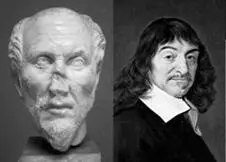
Plotinus, 205–270 ; René Descartes, 1596–1650
Hyperstasis III: The essence of the leap to life lies in a cycle of structures, in which the positive of DNA is the blueprint for the negative and vice versa (hypercycle). In this way, the phenomenon of information enters the universe, on Earth according to the laws of nature, but apparently only a rare occurrence in the wider universe.
Hyperstasis IV: The combining of biological molecules into cells and of cells with each other is controlled by concentrations and differentiations: those which are to act on one another are in contact and those which are not are separated. The next great leap forward is to representatives of the forces emanating from molecules, to simple signals. This is the leap to biological data processing —the ultimate source of all intellectual activity.
Hyperstasis V: The essence of the leap from biological data processing to thinking lies in decoupling certain aspects of data processing and making them independent from forces driven by reflex and instinct. This decoupled data processing constructs an image of the world, which in the infant soon becomes so all-embracing that it contains the subject itself. Once again we have a cycle: the subject thinks—thinking produces the subject.
Humans cannot be explained by the laws that govern life alone. What constitutes humans, i.e. thought or, in other words, consciousness, distinguishes them from other primates not just by degree, but categorically. With consciousness a phenomenon enters the universe that is as new as life itself. Consciousness is that expansion of the horizon which is the source of all joy and sorrow, all hope and fear, all that is human.
With consciousness comes free will as a concomitant, not as an additional hyperstasis. Humans are not free to choose into which world they are “thrown”, and as what; rather, their freedom lies in the next step to be taken, and it is this freedom that they perceive. Similarly, “happiness” is a concomitant, of the physiological nature of learning: life-affirming intentions and experiences lead to the release of hormones that promote a positive mood.
Hyperstasis VI: The last of the hyperstases, culture, embraces innumerable human lives. Culture is more than the accumulation of individuals’ behaviour—it produces language, society, the state, economy, science, art, philosophy and religion. These are all self-organised over historical periods, developing from barely-differentiated beginnings into distinct independent cultures, although the substrate always remains the same: human nature.
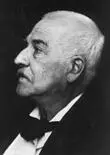
Jacob Burckhardt,
1818–1897
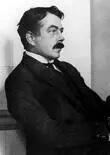
Robert Walser,
1878–1956
Genetically, humans have not developed further over the timeframe of human history. This was the starting point, for example, of Jacob Burckhardt’s description in “Reflections on History” of “humans, who remain unique, ... enduring, striving, acting, as they are, have always been and always will be”. On the other hand, the religious, political and economic organisation of societies does evolve, defining the framework within which individuals, their consciousness and aspirations develop. Moreover, the 20th century saw substantial development of this framework with regard to human rights, democracy, education, health and welfare—despite all the century’s retrograde barbarism. Nevertheless there is still a very, very long way to go before we achieve a culture worthy of human nature, that of “Uncompromising Humanism”.
Читать дальше
